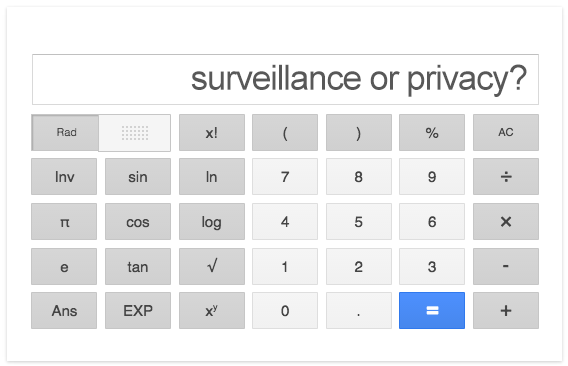European Policy, Government Surveillance
Can a Quantitative Approach Help Address Government Surveillance?

When legislators and governments introduce new national security measures, they often do so in the immediate aftermath of traumatic events. This means new surveillance tools are adopted hastily, with scant attention to important questions about whether the effectiveness of the measure justifies the associated financial costs and the intrusion into privacy and free expression rights.
The political dynamic is well-known and understandable: politicians across the spectrum feel pressure to act (or to be seen to act) decisively in the wake of such attacks. Might a rational, structured analysis of surveillance measures and their associated costs and benefits change this dynamic?
CDT took part in a debate on these and other important questions at the recent ‘State of the Union’ conference in Florence, Italy. One of the four tracks of the conference was titled ‘Surveillance and Freedom in Europe’ and featured the presentation of a major European Commission-funded research project: SURVEILLE. CDT was invited by the project coordinator, Professor Martin Scheinin, former UN Special Rapporteur on human rights and counter-terrorism, to provide a civil society perspective on the findings of the project. This research programme sought to develop a comprehensive methodology to assess surveillance technology in light of its effectiveness in enhancing security, balanced against its impact on fundamentals to data protection, privacy and free expression.
Surveillance, which is an interference with the right to respect for private life and correspondence, must be “proportionate” to a legitimate aim of government.
The project proposes a methodology for making a numerical calculation as to whether surveillance meets the “proportionality” requirement of EU law. Surveillance, which is an interference with the right to respect for private life and correspondence, must be “proportionate” to a legitimate aim of government. The rough equivalent in U.S. law would be to assess “reasonableness” of a Fourth Amendment search by quantifying the likely effectiveness of the search in investigating crime and measuring it against the impact of the search on Fourth Amendment privacy rights and First Amendment free speech rights.
The project and the ensuing debate is highly topical. Like other advocacy groups, CDT has repeatedly cautioned against rushing through laws that could undermine the very rights that open societies need to protect. Most recently, we have seen the dynamic play out in France where a new blanket data retention scheme has been adopted, and where new wide-ranging surveillance measures are being voted through. We saw it in the UK, where in 2014 the ‘DRIP Act’ was expedited through Parliament enabling continued blanket data retention – just months after the Court of Justice of the European Union invalidated the 2006 Data Retention Directive. The Directive itself was adopted with haste as a direct response to the London and Madrid terror attacks.
It seems clear that were policy makers to undertake a systematic cost/benefit analysis such as that proposed by the SURVEILLE project, the result would probably be a more measured, considered approach to electronic surveillance, and more targeted and particularized use of these technologies and methods, as opposed to bulk collection activities. This was a view expressed by many participants in the debates on the SURVEILLE project.
Another issue discussed during the panels was whether the SURVEILLE project’s proposed quantitative methodology could be applied in policy making. The question here is whether it is practicable to express complex legal and ethical values by assigning numerical values to the variables set out in the methodology. A variety of views were expressed on this point. Further, it was discussed whether the methodology could be brought to bear in court cases in which surveillance programmes are being challenged. Together with other groups, CDT participates in legal proceedings involving the lawfulness of surveillance programmes under the EU Charter of Fundamental Rights, and the European Convention of Human Rights, so this issue has practical implications.
In our view, a numerical approach as proposed in the project could be part of a court’s assessment of the lawfulness of surveillance.
In our view, a numerical approach as proposed in the project could be part of a court’s assessment of the lawfulness of surveillance – a non-dispositive factor to consider. Both in the case of drafting of laws and in court cases on the lawfulness of surveillance a methodology could help ensure that decisions are taken based on structured thinking about the factors in the methodology. But, as mentioned, compressing the complex reasoning behind a policy or legal decision into a numerical value would probably not be feasible.
Finally, the debate on the project’s findings focused on the importance of parliamentary and judicial oversight of surveillance programmes, and how an assessment methodology should take into account the quality and rigour of such oversight.
As CDT has pointed out recently, the speed with which European governments move to apply wide-ranging and controversial electronic surveillance measures, and often with insufficient democratic oversight, is a matter for concern for privacy advocates, citizens, and the private sector. Policy makers should assess carefully the necessity and proportionality of these measures and allow time and space for the necessary public debate. The SURVEILLE project sets out a methodology that could be helpful in structuring a rational, systematic debate, both at the national and European levels.


